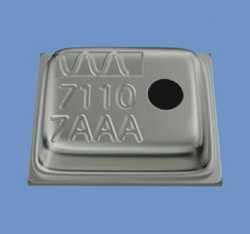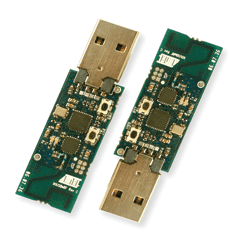The Ultimate Resource for Building Next-Generation Systems
SemiApps allows electronic design engineers to easily and quickly find product vendors who provide chipsets, application-focused ICs, customizable or programmable platforms and specialized components for particular applications. New and interesting blogs from industry experts are featured on the site (www.semiapps.com).
Readers Choice: The best new application-specific ICsAmong the most popular new products on the site this month is a MEMs microphone from Wolfson Microelectronics. The WM7110 and WM7120 analog silicon microphones bring clear recording to a wide range of portable consumer applications. Using Wolfson’s CMOS/MEMS membrane technology, the new devices are said to deliver reliability and performance in a miniature low profile package.

Wolfson is also offering WM7110E and WM7120E versions of the two devices, which are the first MEMS silicon microphones to deliver a sensitivity tolerance of ±1 dB.
A battery charger chip from Summit Microelectronics has also attracted interest from SemiApps visitors. The SMB339 integrated single-cell Li-ion charger is based on a 3-MHz switch-mode architecture. The device’s high-efficiency operation, coupled with Summit’s TurboCharge technology, allows for highest charging current (up to 750 mA from a 500-mA USB source) and lowest power dissipation. This allows for slim industrial designs and significantly faster charging times. The SMB339 allows true universal USB and ac/dc battery charging.
The Automatic Power Source Detection differentiates between a USB 2.0 port and a “USB” ac/dc adapter. This allows the charger to comply with the USB 2.0 100/500 mA limits, but also to draw higher current levels from an ac/dc wall adapter. Unlike existing solutions, the device performs these functions independently, without the need for external components or system software operation. These features ensure true USB compliance while providing the fastest safe charging from any source (including ac/dc adapters), giving end-users the best charging performance in any situation.
Another popular posting is the Si500 family from Silicon Labs. By replacing crystal oscillators with a 100 percent silicon oscillator, the Si500 family eliminates the quartz resonator that must be cut and tuned for each frequency, replacing it with an ultra-low phase noise silicon oscillator manufactured using standard, high volume IC manufacturing processes capable of generating any output frequency from 0.9 to 200 MHz. Because it relies on standard CMOS manufacturing and low cost packaging, it is immune to the contamination issues that affect traditional hermetically-sealed ceramic or metal-packaged XOs during device assembly, providing superior reliability at startup and guaranteed oscillation over the lifetime of the product.
Engineering blogs of the monthOne of our most popular blogs this past month comes from Bruce Swanson, Technical Marketing Engineer, Design-For-Test division at Mentor Graphics. Swanson offers some insights into what is going on in the realm of chip testing as device geometries continue to decrease.

“As the device geometries get smaller, new types of defects appear or became more prevalent. For example, at the 130nm node more timing related defects show up. A timing defect might be caused by a partially formed via or other anomaly in the physical implementation of the IC.” Check out his blog for more thoughts on the topic.
Design Classics Library: Application notes of note and moreThis month we present, from Atmel, the AVR USB 2.4-GHz Wireless Reference Design for battery-based PC peripherals. The AVRUSBRF01 is based on the Atmel AT90USB162 microcontroller, which allows connection to a PC through the USB. This kit can be programmed through the USB and implement various standard USB device classes for input devices (for example,. human interface device, generic HID I/O, Communication device class, etc.)

The AVR USB can also support composite device classes, combining for instance and HID interface for remote control and an Audio interface for audio streaming. The kit contains two identical AVR USB RF modules and can connect to two different USB ports to establish wireless communication and evaluate the solution. They can also communicate with wireless peripherals derived from this reference design.
Marty Gold
Advertisement
Learn more about Electronic Products Magazine





